
An electronic musical instrument or electrophone is a musical instrument that produces sound using electronic circuitry. Such an instrument sounds by outputting an electrical, electronic or digital audio signal that ultimately is plugged into a power amplifier which drives a loudspeaker, creating the sound heard by the performer and listener.

Keith Noel Emerson was an English keyboardist, songwriter, composer and record producer. He played keyboards in a number of bands before finding his first commercial success with the Nice in the late 1960s. He became internationally famous for his work with the Nice, which included writing rock arrangements of classical music. After leaving the Nice in 1970, he was a founding member of Emerson, Lake & Palmer (ELP), one of the early progressive rock supergroups.

An analog synthesizer is a synthesizer that uses analog circuits and analog signals to generate sound electronically.

Manfred Mann were an English rock band, formed in London and active between 1962 and 1969. The group were named after their keyboardist Manfred Mann, who later led the successful 1970s group Manfred Mann's Earth Band. The band had two different lead vocalists, Paul Jones from 1962 to 1966 and Mike d'Abo from 1966 to 1969.

KORG Inc., founded as Keio Electronic Laboratories, is a Japanese multinational corporation that manufactures electronic musical instruments, audio processors and guitar pedals, recording equipment, and electronic tuners. Under the Vox brand name, they also manufacture guitar amplifiers and electric guitars.

Brent Mydland was an American keyboardist, song writer and singer. He was a member of the rock band The Grateful Dead from 1979 to 1990, a longer tenure than any other keyboardist in the band.

Manfred Mann's Earth Band are an English rock band formed by South African musician Manfred Mann. Their hits include covers of Bruce Springsteen's "For You", "Blinded by the Light" and "Spirit in the Night". After forming in 1971 and with a short hiatus in the late 1980s/early 1990s, the Earth Band continues to perform and tour.
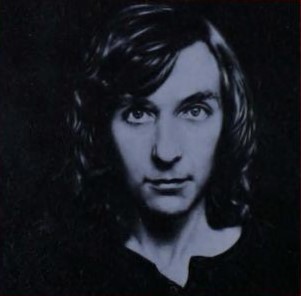
Richard Tandy was an English musician. He was the full-time keyboardist in the band Electric Light Orchestra ("ELO"). His palette of keyboards was an important ingredient in the group's sound, especially on the albums A New World Record (1976), Out of the Blue (1977), Discovery (1979) and Time (1981). He collaborated musically with ELO frontman Jeff Lynne on many projects, among them songs for the Electric Dreams soundtrack, Lynne's solo album Armchair Theatre and Lynne-produced Dave Edmunds album Information.
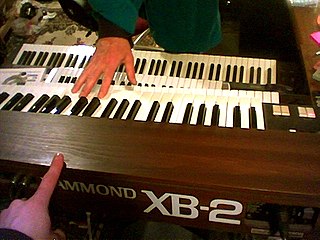
A clonewheel organ is an electronic musical instrument that emulates the sound of the electromechanical tonewheel-based organs formerly manufactured by Hammond from the 1930s to the 1970s. Clonewheel organs generate sounds using solid-state circuitry or computer chips, rather than with heavy mechanical tonewheels, making clonewheel organs much lighter-weight and smaller than vintage Hammonds, and easier to transport to live performances and recording sessions.
Polyphony is a property of musical instruments that means that they can play multiple independent melody lines simultaneously. Instruments featuring polyphony are said to be polyphonic. Instruments that are not capable of polyphony are monophonic or paraphonic.

Messin' is a rock album released in 1973 by Manfred Mann's Earth Band.
A combo organ, so-named and classified by popular culture due to its original intended use by small, touring jazz, pop and dance groups known as "combo bands", as well as some models having "Combo" as part of their brand or model names, is an electronic organ of the frequency divider type, generally produced between the early 1960s and the late 1970s. This type of organ predated, and contributed largely to, the development of modern synthesizers. The combo organ concept, at least in the context of mass-production, is thought to have arisen from popular demand, when smaller home organs were seen in music stores. Combo organs were probably originally developed in the United Kingdom, based on the Univox polyphonic version of the Clavioline, and some models included the inner-workings of Italian-made transistor accordions. They were the brainchild of necessity for portable organs of simple design, mainly for use in these small groups. Combo organs ended up having a major impact on the music scene of the mid- and late 1960s, particularly on rock and roll of that era.
Michael John Hugg is a British musician who was a founding member of the 1960s group Manfred Mann.
The Manfreds is a British pop group, formed in 1991 as a reunion of former members of the 1960s pop group Manfred Mann, however without their eponymous founder Manfred Mann.
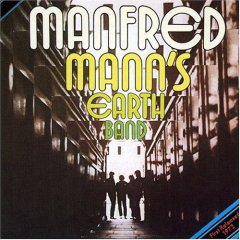
Manfred Mann's Earth Band is the eponymous debut studio album by English rock band Manfred Mann's Earth Band, released on 24 January 1972 by Polydor Records.
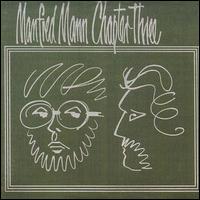
Manfred Mann Chapter Three is the debut album released in 1969 by Manfred Mann Chapter Three. It was one of the three first albums released on the Vertigo record label. The principal members of the group were Manfred Mann and Mike Hugg. Mann played the organ and acted as the group's musical arranger, whilst Hugg handled vocals, played piano and was the chief songwriter. The group was augmented by a five-piece brass section and several distinguished jazz soloists.

A synthesizer is an electronic musical instrument that generates audio signals. Synthesizers typically create sounds by generating waveforms through methods including subtractive synthesis, additive synthesis and frequency modulation synthesis. These sounds may be altered by components such as filters, which cut or boost frequencies; envelopes, which control articulation, or how notes begin and end; and low-frequency oscillators, which modulate parameters such as pitch, volume, or filter characteristics affecting timbre. Synthesizers are typically played with keyboards or controlled by sequencers, software or other instruments and may be synchronized to other equipment via MIDI.
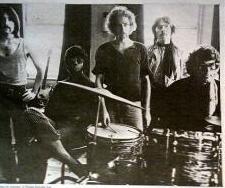
Manfred Mann Chapter Three were a British experimental jazz rock band founded by South African keyboard player Manfred Mann and long-time partner Mike Hugg, both former members of the group Manfred Mann. "Chapter III" was a reference to the earlier line-ups with singers Paul Jones followed by Mike D'Abo.
The Korg CX-3 is an electronic clonewheel organ with drawbars that simulates the sound of an electromechanical Hammond organ and the Leslie speaker, a rotating speaker effect unit. The CX-3 was first introduced in 1979.
















